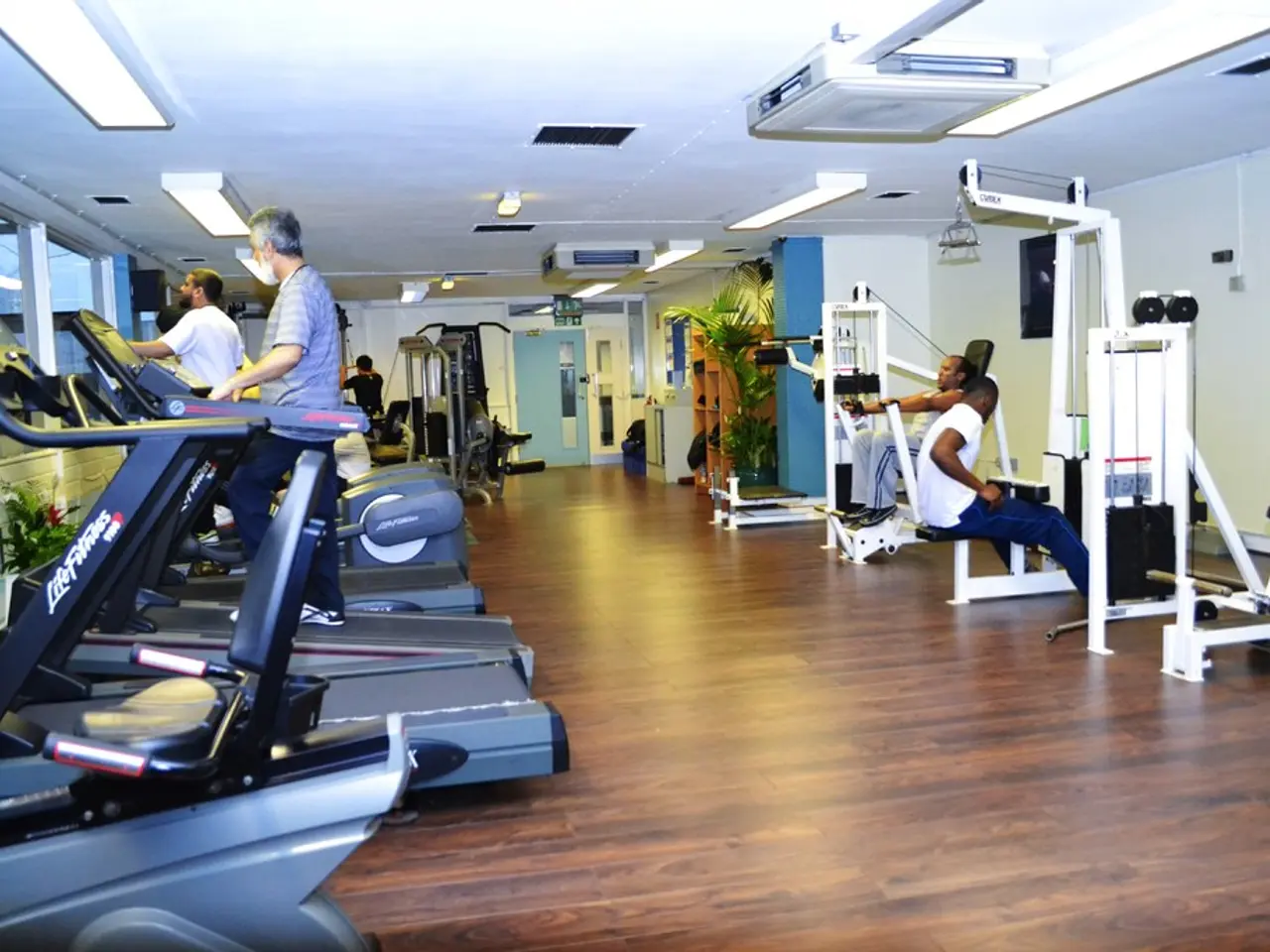Comparing Aerobic and Anaerobic Workouts: Essential Facts to Remember
According to the American Heart Association (AHA), adults should engage in a balanced exercise regimen to improve overall health, reduce chronic disease risk, and boost quality of life. The guidelines recommend at least 150 to 300 minutes per week of moderate-intensity aerobic exercise, such as brisk walking, dancing, or light cycling, or 75 to 150 minutes per week of vigorous-intensity aerobic activity like running or swimming laps [1][2][3][4][5]. In addition, adults should perform muscle-strengthening (anaerobic) activities involving major muscle groups on two or more days per week [1].
Aerobic exercises are endurance-type activities that increase a person's heart rate and breathing rate over relatively long durations. They are referred to as aerobic because they require oxygen to generate energy. Examples of aerobic exercise include brisk walking, running, cycling, and swimming [6]. On the other hand, anaerobic exercises involve short bursts of intense activity, such as sprinting and weightlifting, which help a person gain or maintain muscle mass and increase bone density [7].
It is essential to note that both aerobic and anaerobic exercises are beneficial for the cardiovascular system, helping to strengthen the heart muscle, boost circulation, and increase metabolism. However, people at risk of developing a cardiovascular condition, those with preexisting cardiovascular conditions like heart conditions, coronary artery disease, high blood pressure, or blood clots, and people recovering from a stroke or another type of cardiac event should consult a doctor before starting aerobic exercise [8]. Similarly, people with underlying health concerns should consult a doctor before adding anaerobic exercise to their regular workout routine [9].
For those new to anaerobic exercises, working with a personal trainer can help reduce the risk of overexertion or injury. People with a sedentary lifestyle should ease into physical activity gradually to avoid putting unnecessary stress on the body [10].
The American Psychological Association notes that exercise of any type is beneficial for mental health, as well as physical health [11]. Thus, a balanced exercise routine that includes both aerobic and anaerobic activities can contribute significantly to overall well-being.
In summary, the AHA recommends a balanced regimen of aerobic activities complemented by regular anaerobic muscle-strengthening sessions for optimal health benefits. The table below provides an overview of the frequency and duration of each exercise type, along with examples:
| Exercise Type | Frequency & Duration | Examples | |-------------------------|------------------------------------|----------------------------------| | Aerobic (Moderate) | 150–300 minutes per week | Brisk walking, dancing, light cycling | | Aerobic (Vigorous) | 75–150 minutes per week | Running, swimming laps, HIIT | | Anaerobic (Muscle-strengthening) | At least 2 days per week | Weight lifting, resistance training|
[1] American Heart Association. (2021). Physical Activity Recommendations for Adults. Retrieved from [https://www.heart.org/en/healthy-living/fitness/physical-activity/american-heart-association-recommendations-for-physical-activity-in-adults] [2] American Heart Association. (2021). Understanding Aerobic and Anaerobic Exercise. Retrieved from [https://www.heart.org/en/healthy-living/fitness/understanding-aerobic-and-anaerobic-exercise] [3] American Heart Association. (2021). The Importance of Muscle-Strengthening Activities. Retrieved from [https://www.heart.org/en/healthy-living/fitness/understanding-aerobic-and-anaerobic-exercise/the-importance-of-muscle-strengthening-activities] [4] American Heart Association. (2021). Aerobic Exercise for Heart Health. Retrieved from [https://www.heart.org/en/healthy-living/fitness/aerobic-exercise] [5] American Heart Association. (2021). Anaerobic Exercise for Heart Health. Retrieved from [https://www.heart.org/en/healthy-living/fitness/anaerobic-exercise] [6] American Heart Association. (2021). Aerobic Exercise: Types and Benefits. Retrieved from [https://www.heart.org/en/healthy-living/fitness/aerobic-exercise/aerobic-exercise-types-and-benefits] [7] American Heart Association. (2021). Anaerobic Exercise: Types and Benefits. Retrieved from [https://www.heart.org/en/healthy-living/fitness/anaerobic-exercise/anaerobic-exercise-types-and-benefits] [8] American Heart Association. (2021). Who Should and Should Not Do Aerobic Exercise. Retrieved from [https://www.heart.org/en/healthy-living/fitness/understanding-aerobic-and-anaerobic-exercise/who-should-and-should-not-do-aerobic-exercise] [9] American Heart Association. (2021). Who Should and Should Not Do Anaerobic Exercise. Retrieved from [https://www.heart.org/en/healthy-living/fitness/understanding-aerobic-and-anaerobic-exercise/who-should-and-should-not-do-anaerobic-exercise] [10] American Heart Association. (2021). Starting a New Exercise Program. Retrieved from [https://www.heart.org/en/healthy-living/fitness/starting-a-new-exercise-program] [11] American Psychological Association. (2021). Exercise and Mental Health. Retrieved from [https://www.apa.org/topics/exercise-mental-health]
- Engaging in a balanced exercise regimen, as recommended by the American Heart Association (AHA), can help reduce the risk of chronic diseases such as heart conditions, coronary artery disease, and high blood pressure.
- The predictive science of health-and-wellness suggests that regular aerobic exercises like brisk walking and light cycling can help manage conditions such as asthma and depression.
- According to the American Psychological Association, exercise has positive effects on mental health, possibly contributing to weightloss and potentially helping to manage conditions like bipolar disorder.
- The UC's health-and-wellness resources emphasize the importance of fitness-and-exercise in preventing and managing health issues like HIV and health-related concerns such as obesity.
- Aerobic exercises, such as brisk walking and swimming laps, are endurance-type activities that can boost physical health and improve heart health.
- Anaerobic exercises, like weightlifting and resistance training, are beneficial for increasing bone density and gaining or maintaining muscle mass.
- It is crucial for individuals with underlying health concerns, including those at risk of developing a cardiovascular condition, to consult a doctor before embarking on any aerobic or anaerobic exercise program to minimize the risk of complications.




